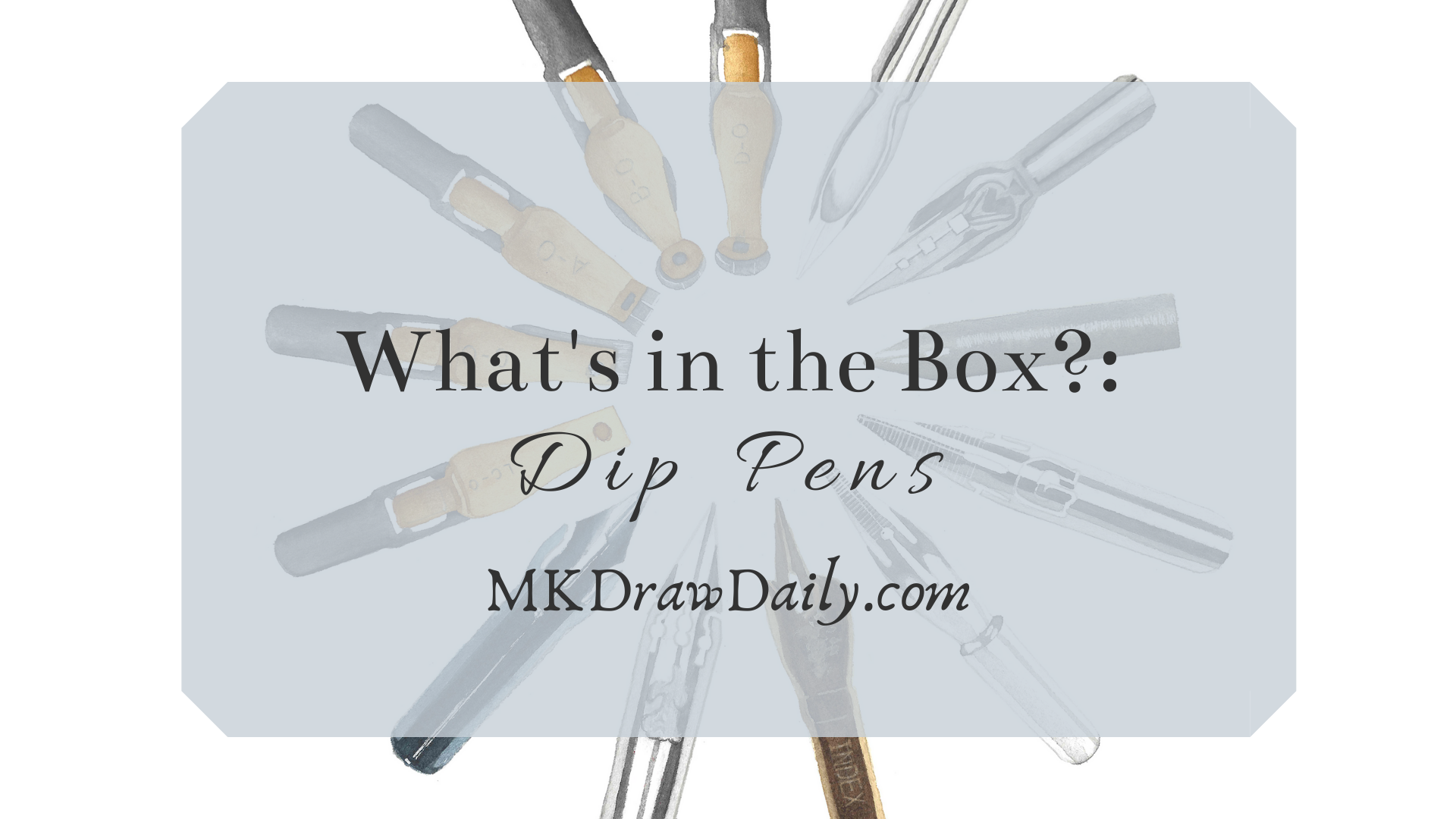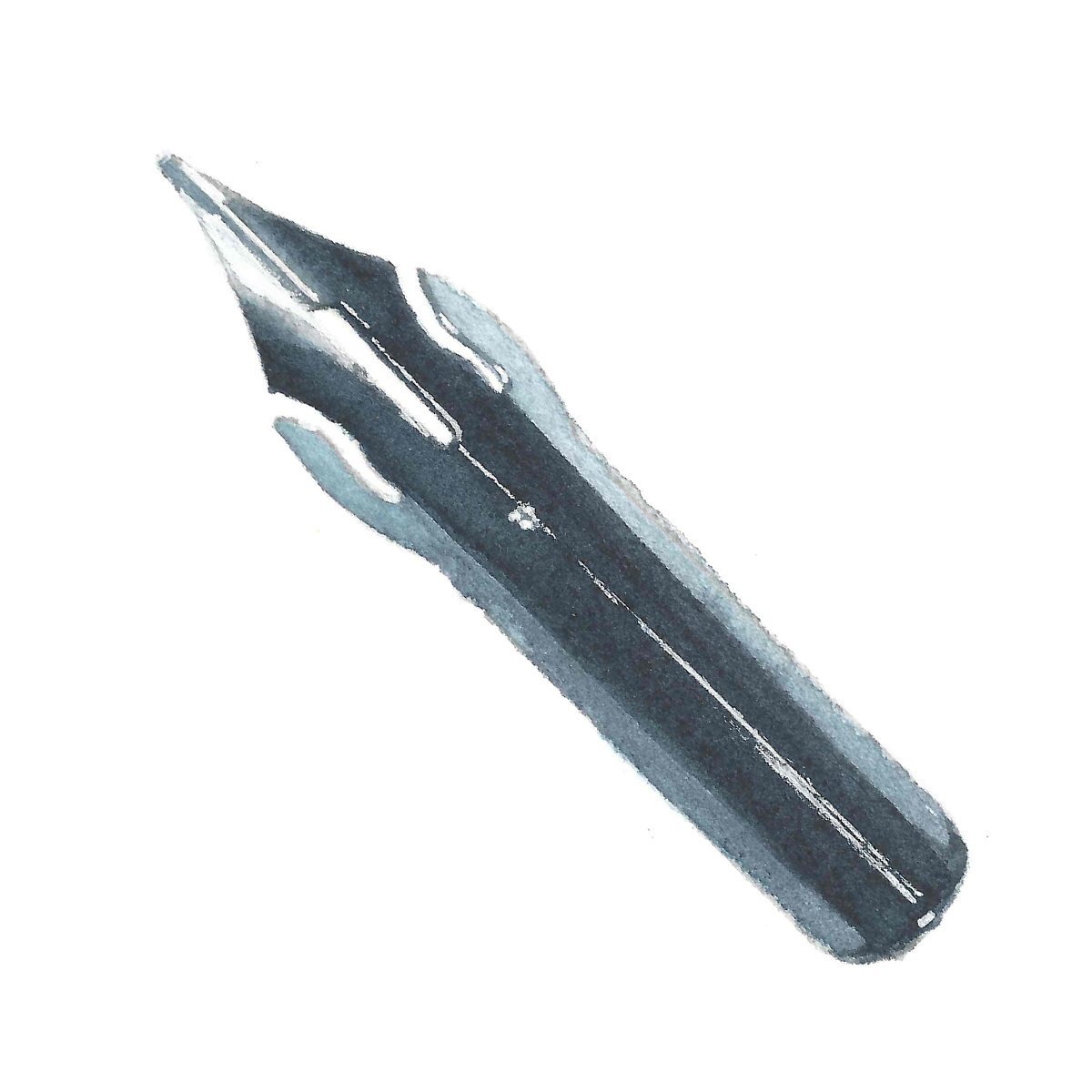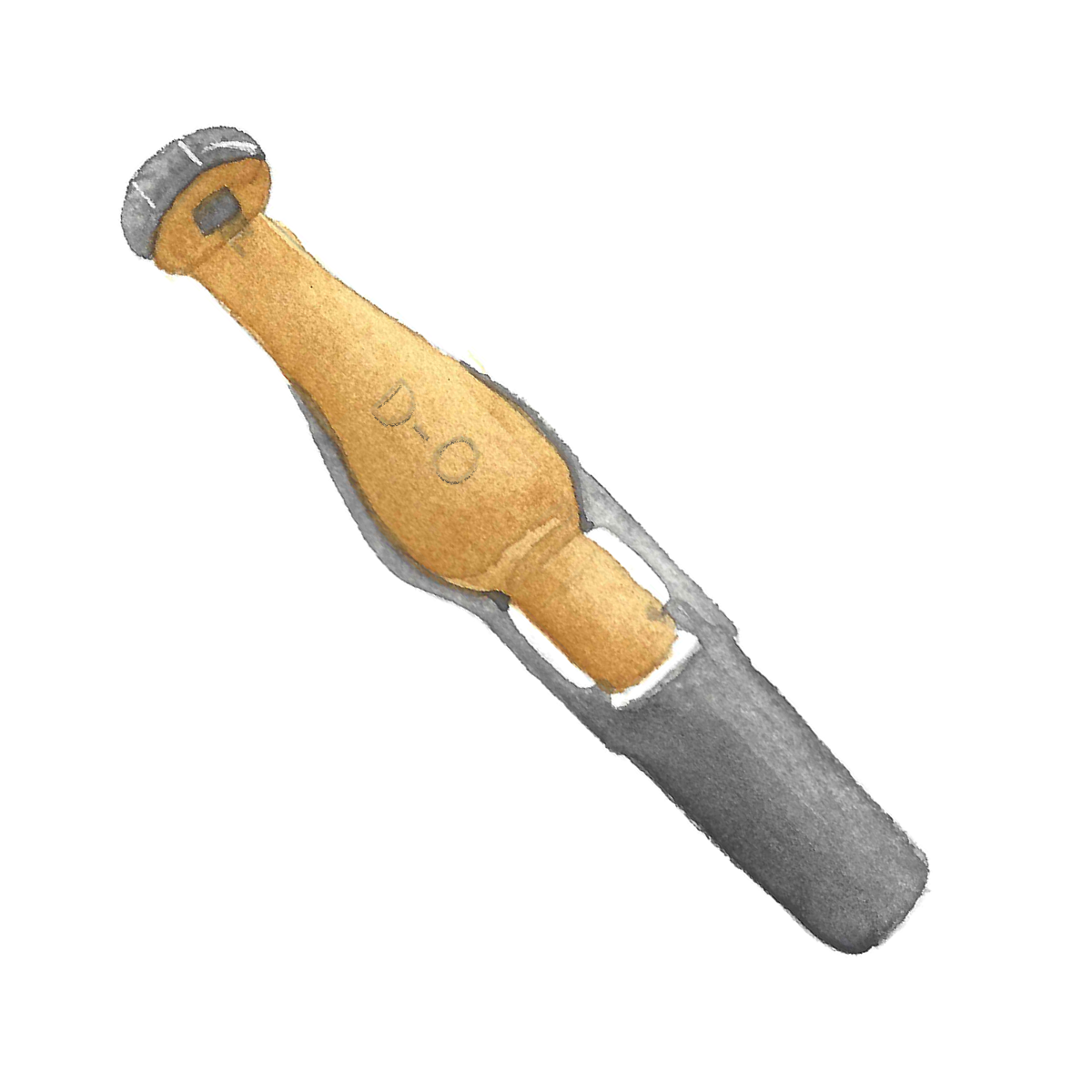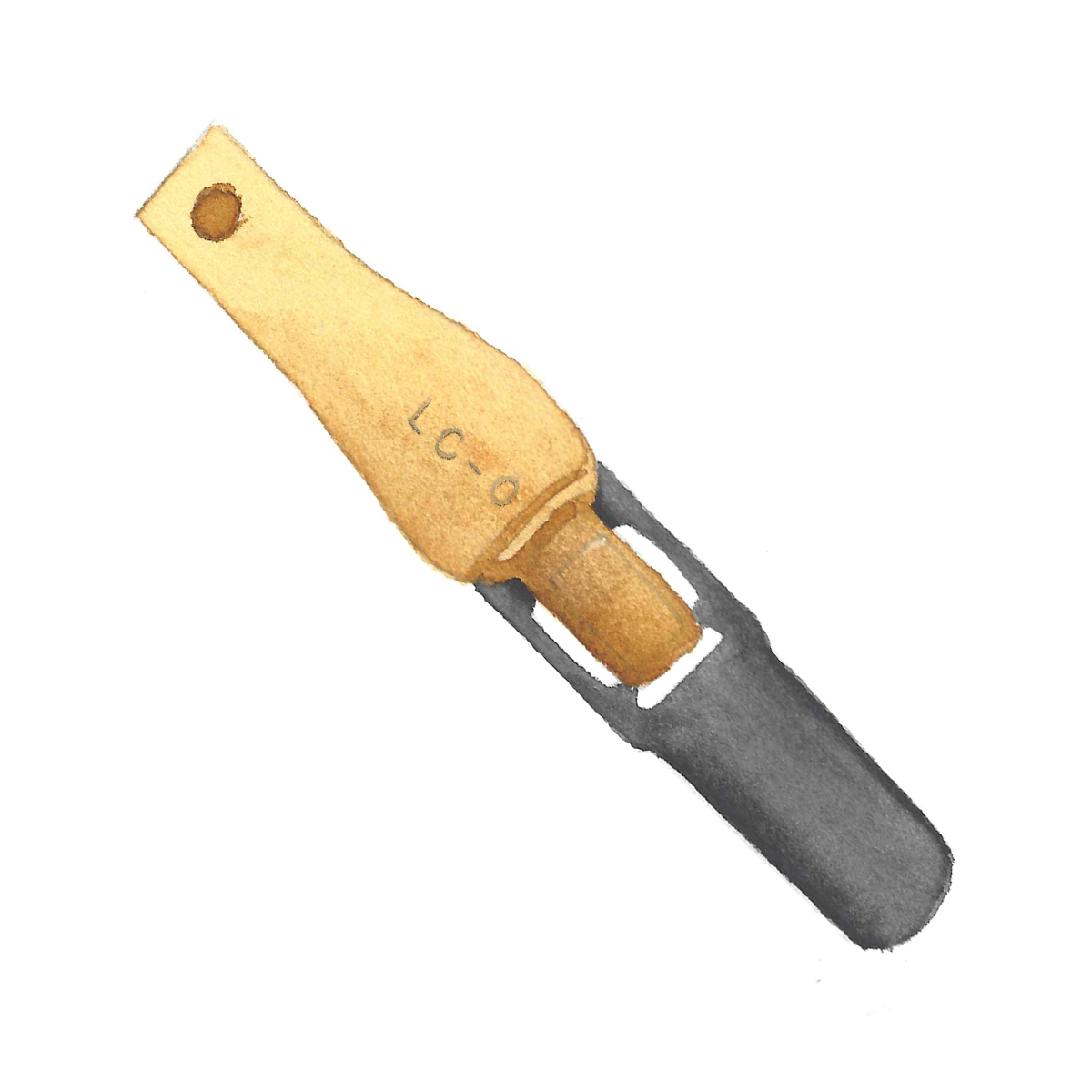WITB: Dip Pen Nibs
AN EASY GUIDE TO ESSENTIAL ART TOOLS
Dip Pen Anatomy | Holders | Nibs | Popular Brands | 10 Tips
Welcome back to my official blog guide, “What’s in the Box!?”
And today we are going to approach the topic of dip pens.
Today we will be discussing “Everything You Need to Know About Dip Pens” however, I have been told that some people find the presentation - meaning everything being in one place - overwhelming. You can follow one of the links above to jump to a different blog post where the information has been divided into parts.
TYPES OF NIBS
While there are many types of nib holders, the variety does not hold a candle compared to just how many types of pen nibs there are. While some are designed for general writing, others for drawing, and yet others for calligraphy, the world has many options to choose from. So I am going to be reviewing a general list of available nib types.
POINTED
Pointed pen nibs have relatively fine tips and are designed for both writing and/or drawing. Some of these nibs are more flexible than others and more flexible nibs are ideal for both the artist and calligrapher where a variety of line widths are desired. You can easily get both hairline widths, if you have a soft touch, as well as thicker lines if you apply more pressure to the nib.
QUILL
This style of pen nib is designed to mimic the abilities of the old fashioned writing quills made from the flight feathers of various birds including the goose, crow, eagle, owl, and hawk. Today we have different versions of quill nibs based on both the Crow and Hawk feather. You can get varied line widths with this nib, it just depends on the nibs stiffness. These are often used for delicate line work and are noted for their usefulness when crosshatching thanks to their particularly fine tip compared to other pointed nibs.
*These nibs are sometimes referred to as mapping, or maru pen nibs depending on the manufacturer and not all mapping nibs are fully cylindrical.
MONOLINE
Monoline is a style of writing that means every line, no matter the direction, the thickness or line weight will remain the same. So a monoline nib is designed to accomplish this. There are a wide variety of monoline nibs out there, many of them are quite firm to help keep your line widths more consistent. But some, like those that fall under the pointed category, may still provide a little bit of variation depending on how much pressure is applied, such as the ever trusted school nib.
SQUARE AND ROUND
Pictured here are two examples. First a square nib, the A style - pictured above, and second a round nib, or the B style - pictured on the right. Both the square and round nibs are monoline nibs available in 6 sizes so as to meet any artist’s needs. A Larger nibs will fill large areas more quickly, so depending on your style of art, you may find this variation of nibs to be particularly useful. Similar round nibs are sometimes referred to as “Ornamental” nibs.
BROADEDGE
Broadedged nibs are similar to monoline nibs, but these are known for their ability to create both thin and thick lines depending on the direction they are being pulled in. Up and down strokes as well as diagonal strokes will be thicker, while side to side marks will be result in a consistent thin line weight.
Flat, Oval, and Left Hand:
You can see the different sizes that are available depicted in the image below.
Monoline Square: A-0, A-1, A-2, A-3, A-4, A-5
Monoline Round: B-0, B-1, B-2, B-3, B-4, B-5
Broadedge Flat: C-0, C-1, C-2, C-3, C-4, C-5
(C is also available in Left Hand)
Broadedge Oval: D-0, D-1, D-2, D-3, D-4, D-5
Nib Gallery:
There are 29 nibs in all listed below.
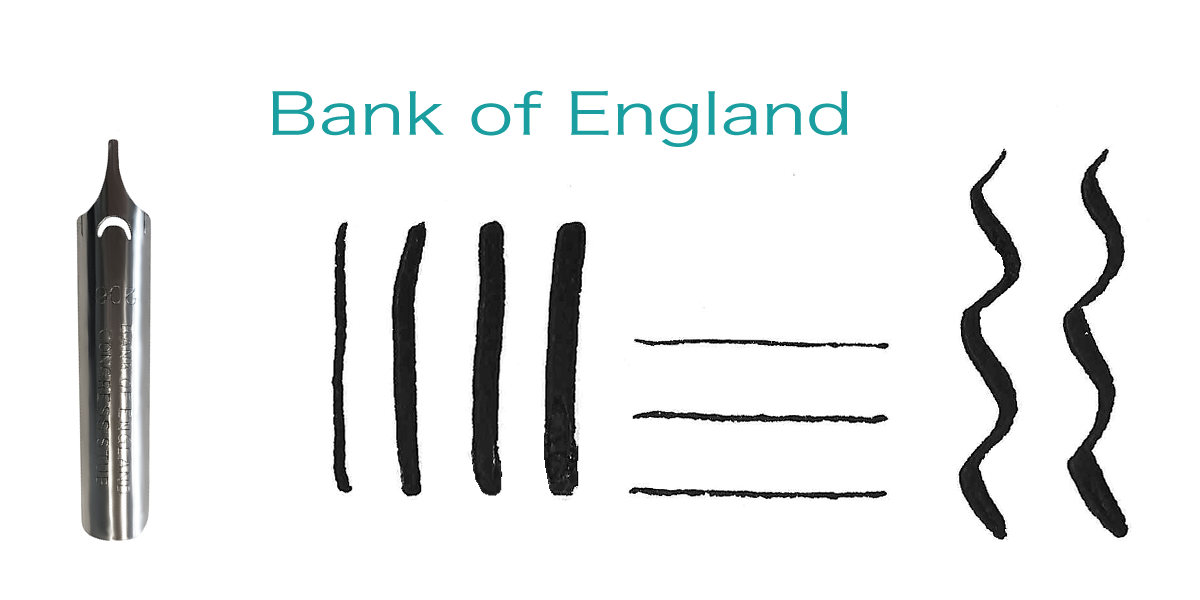

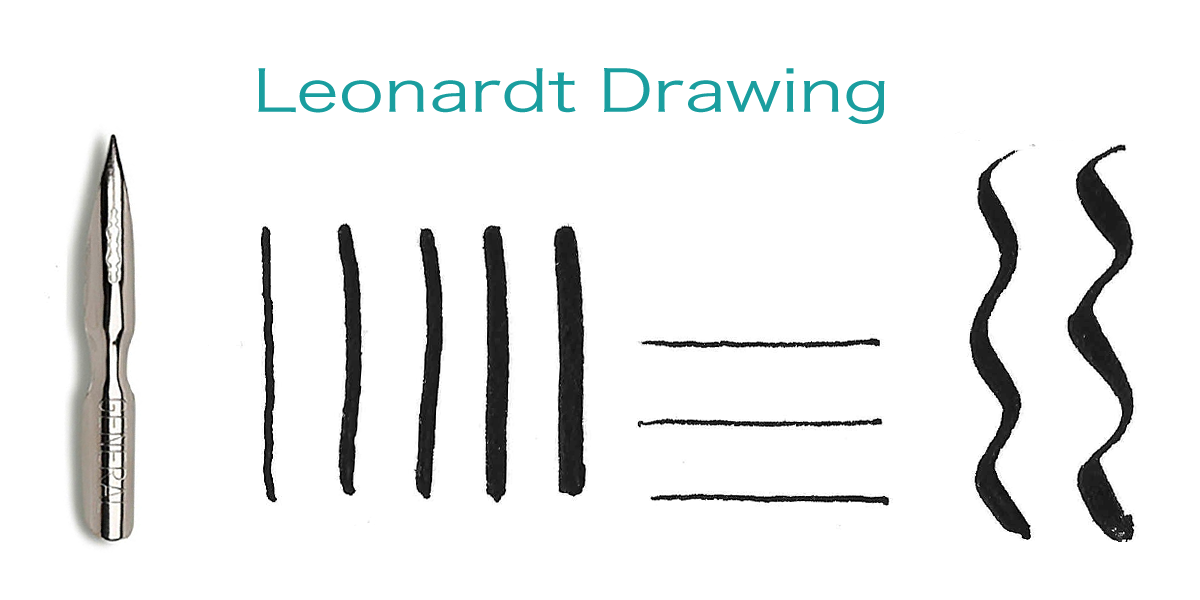
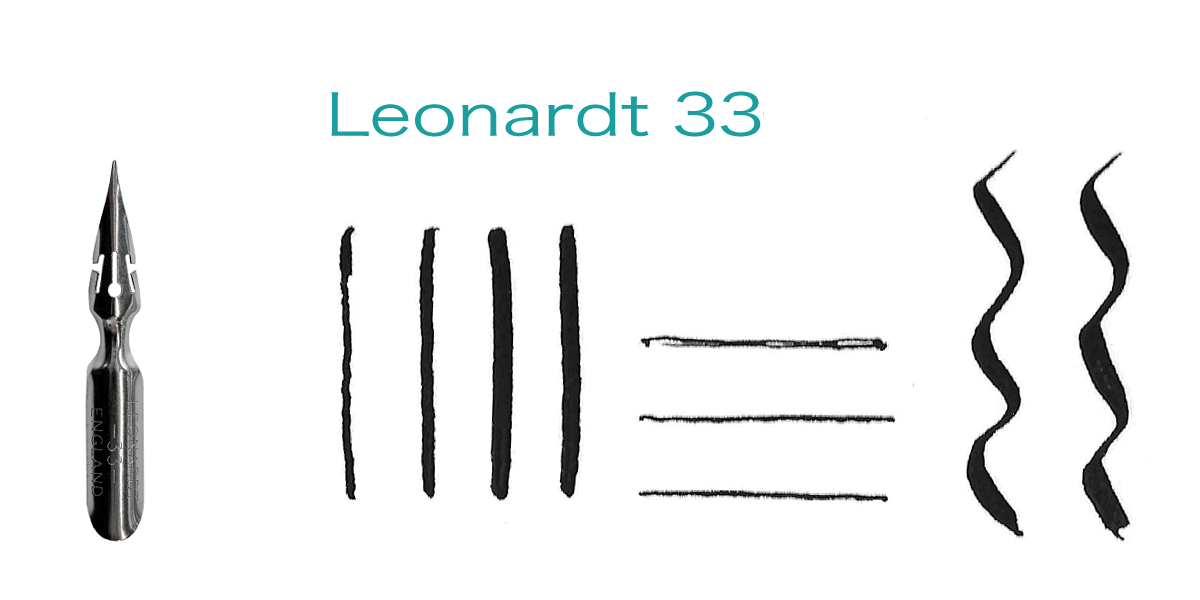
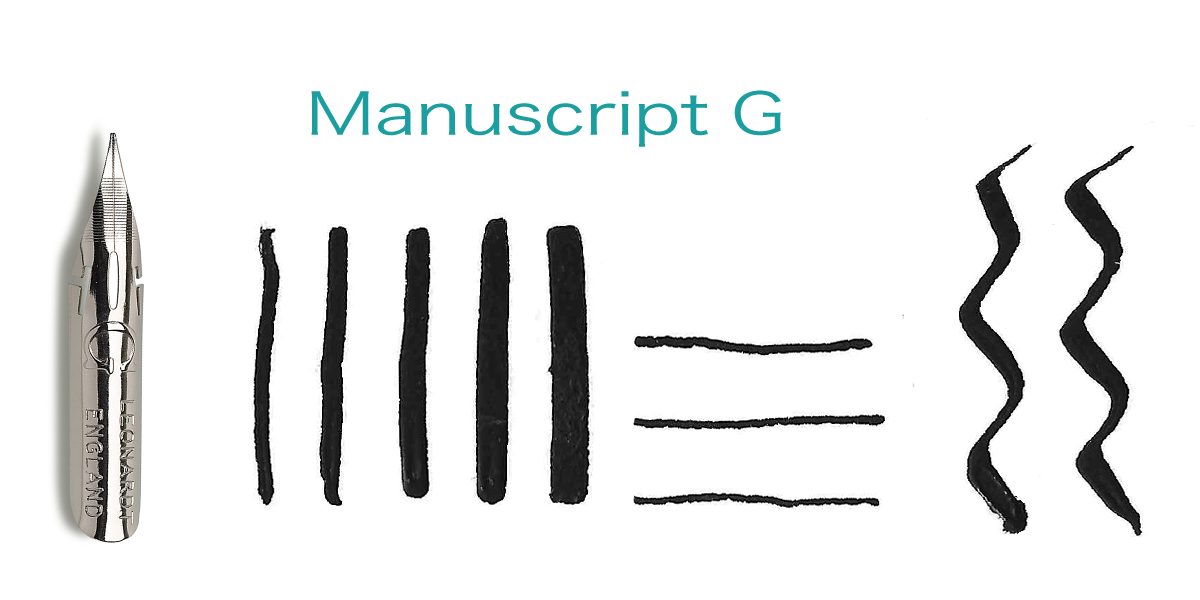
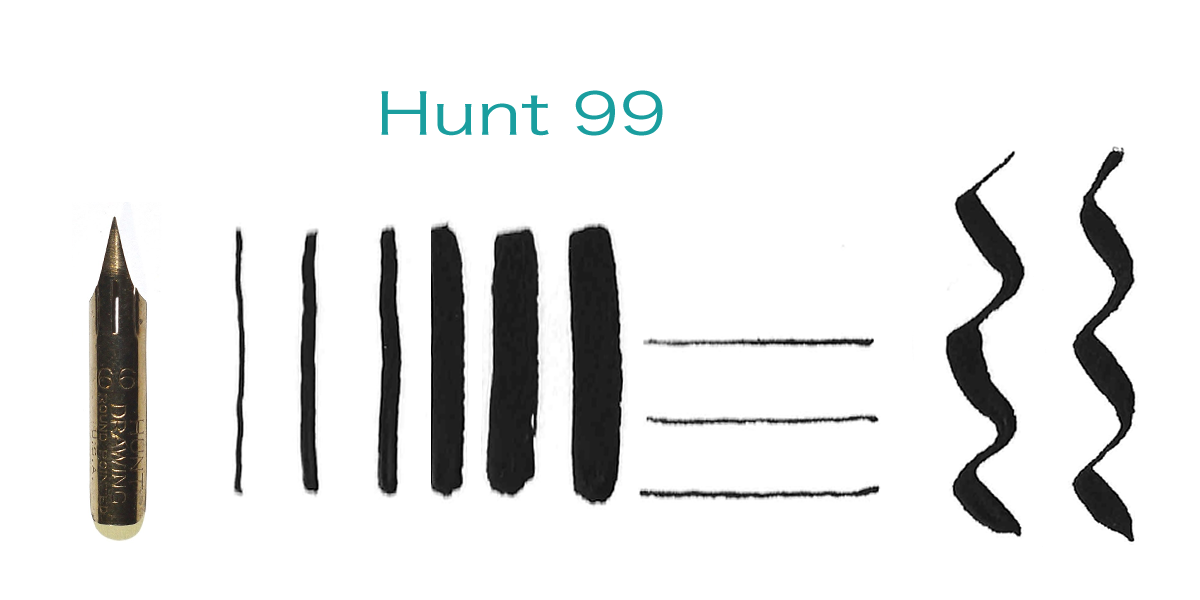
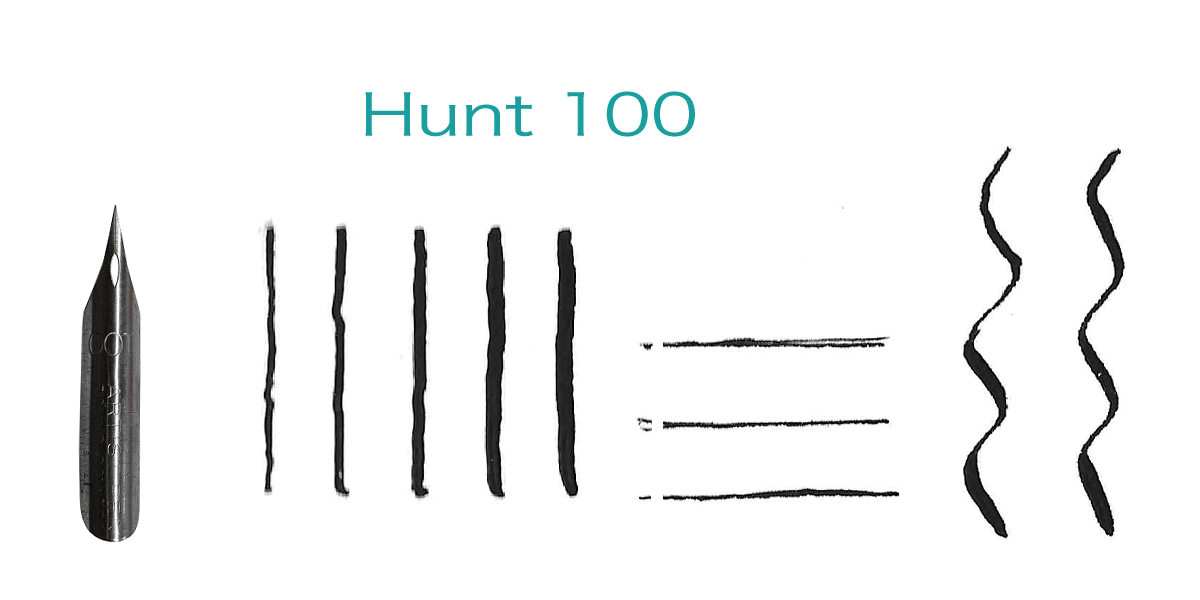
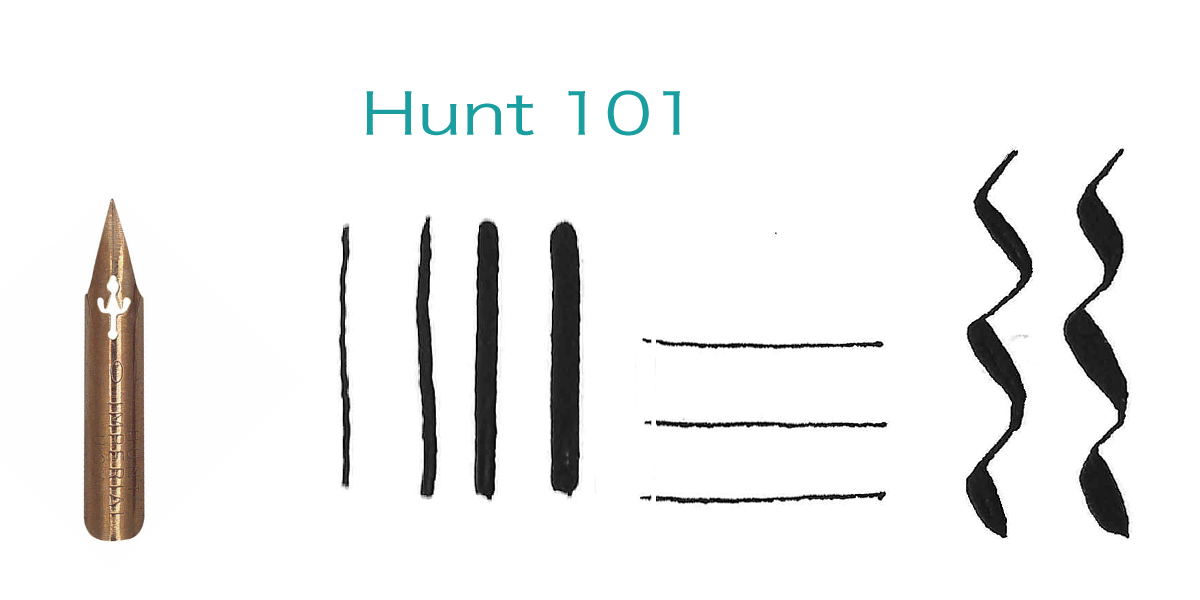
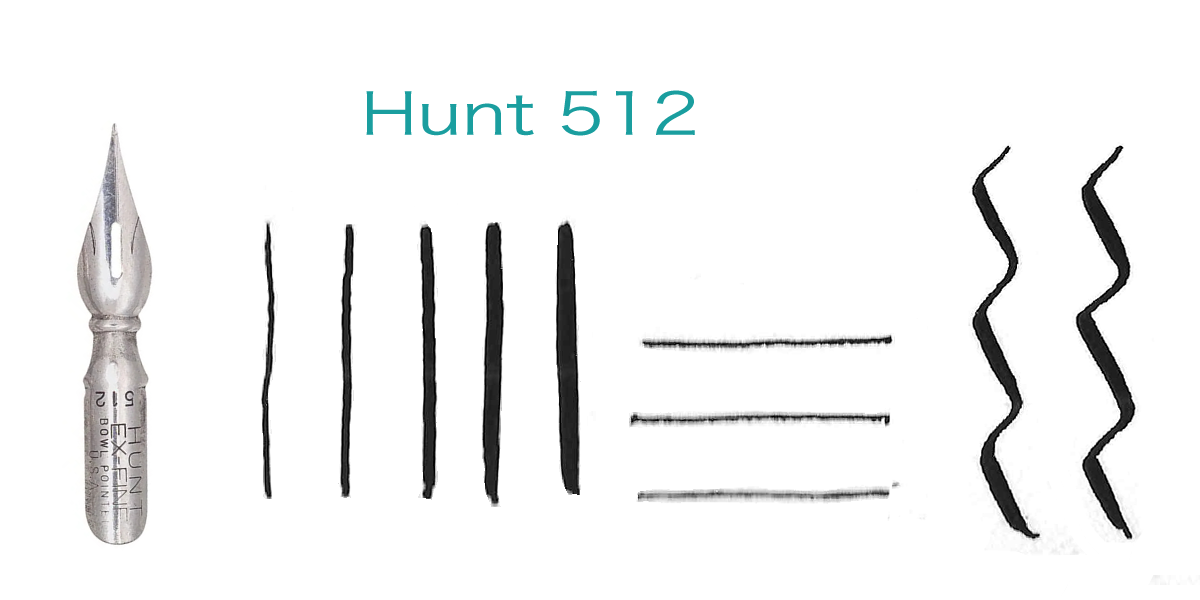
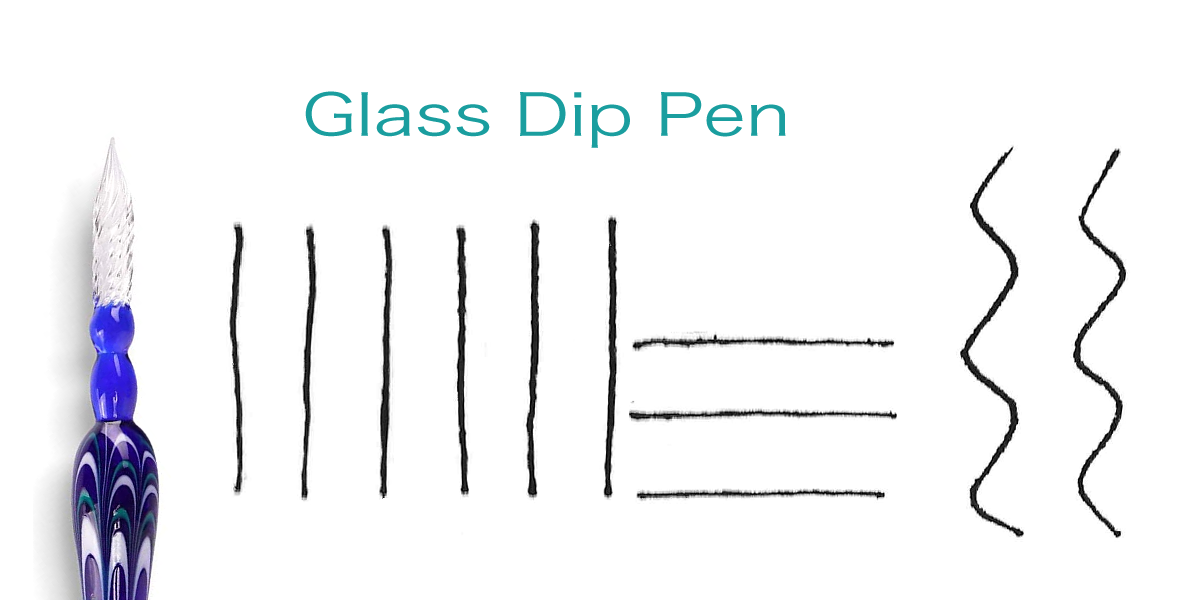
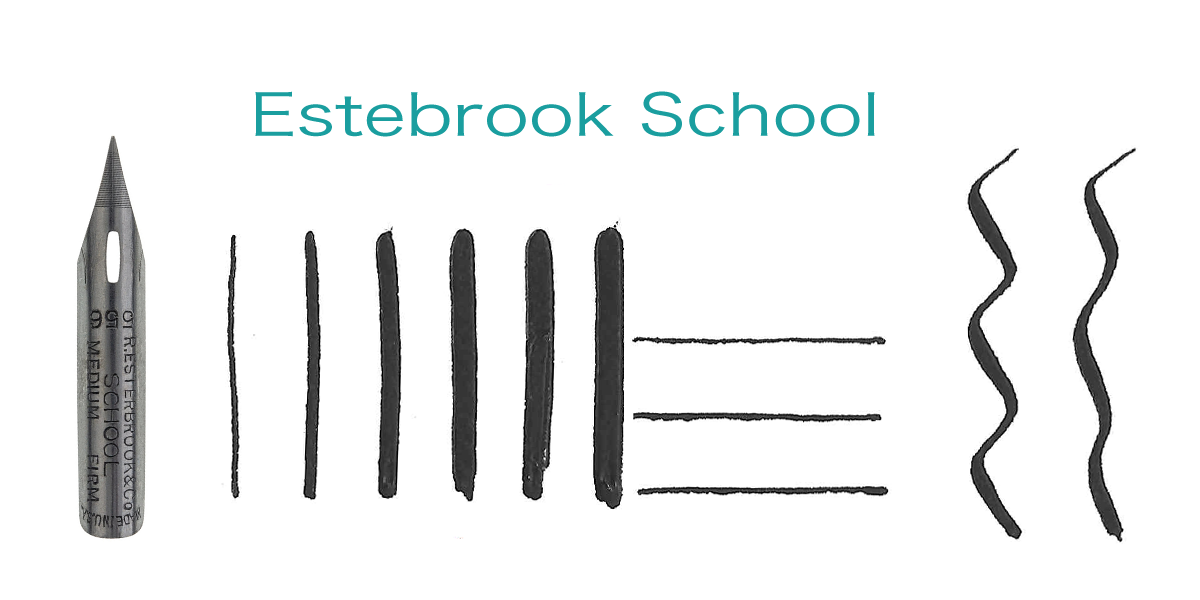
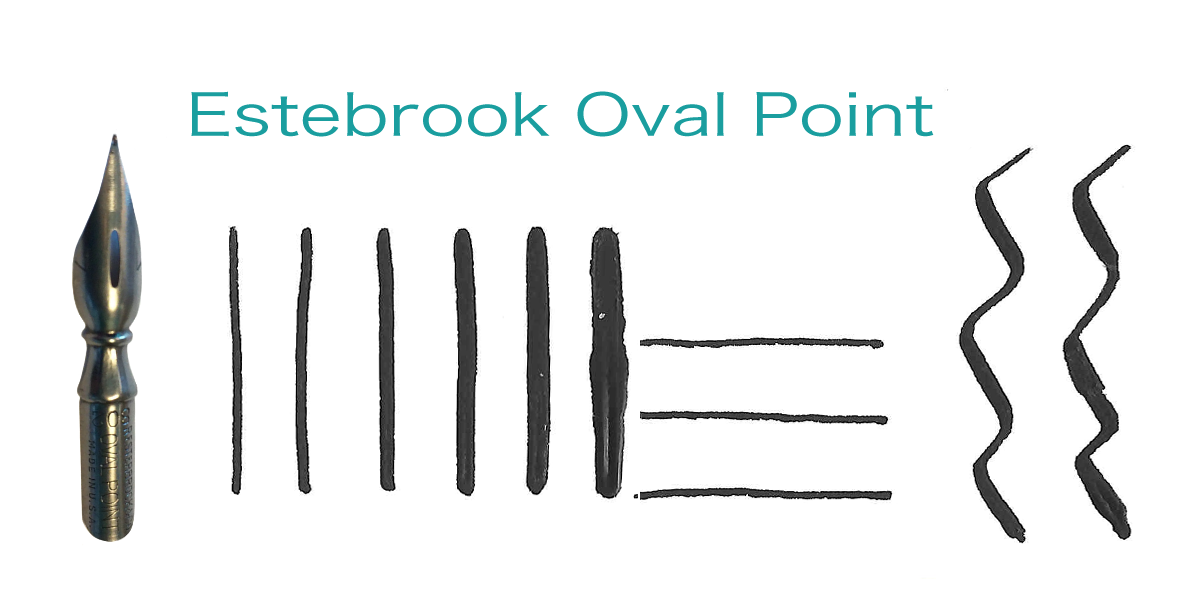
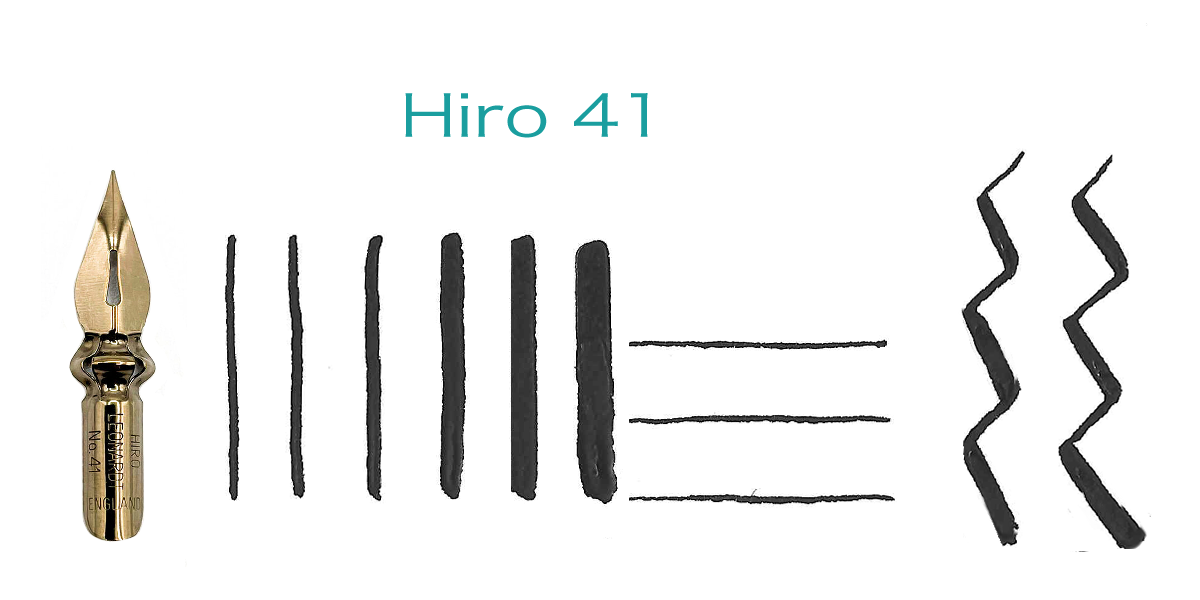
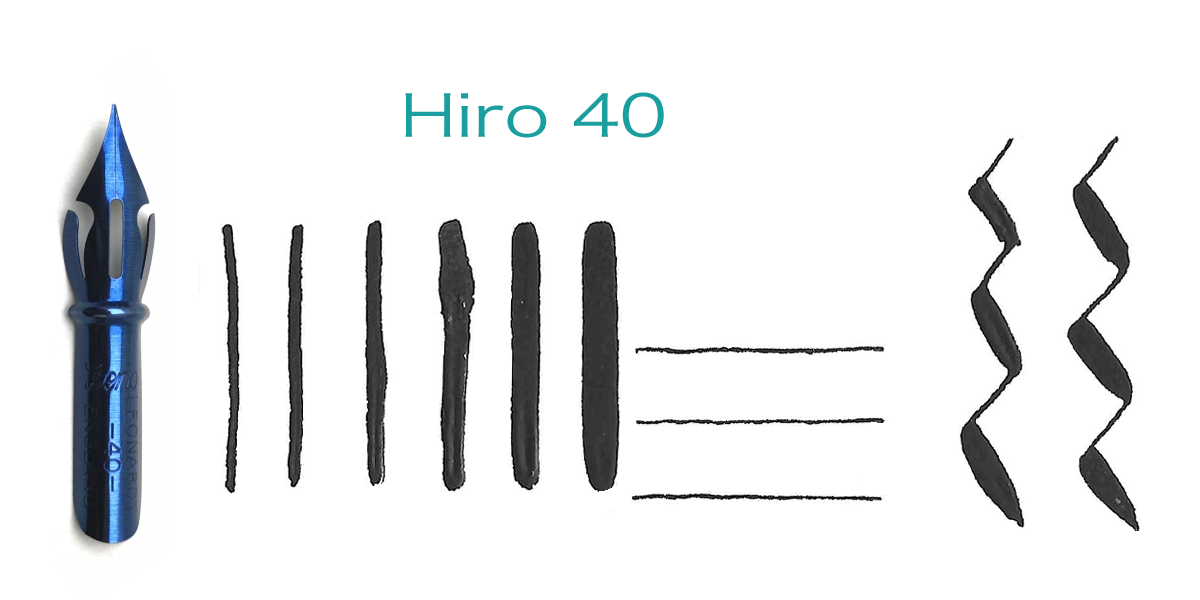
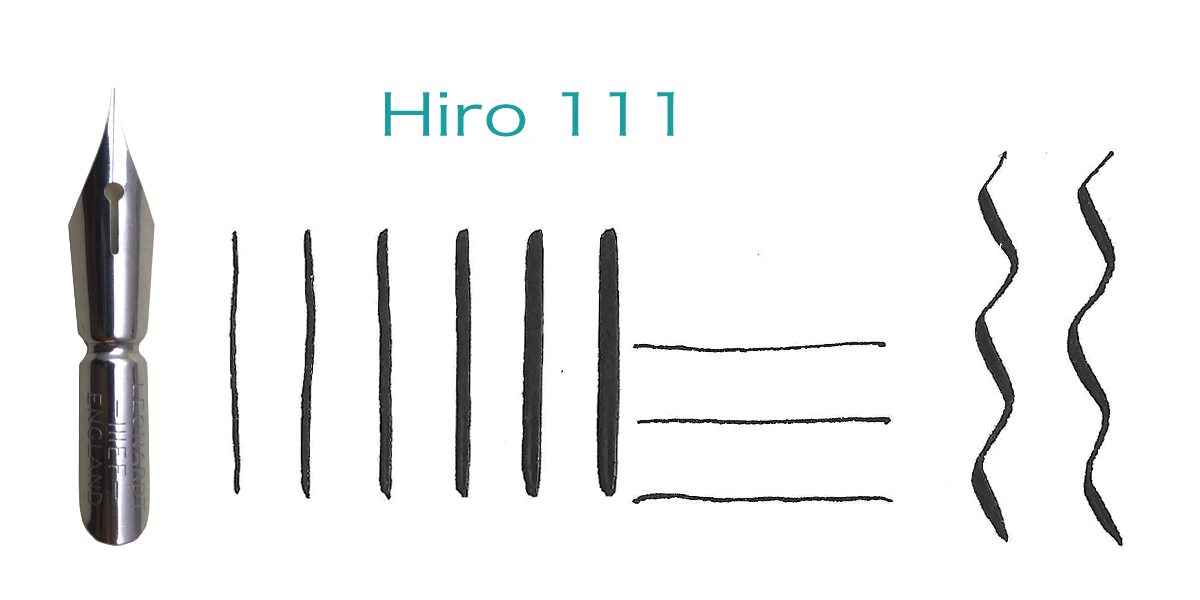
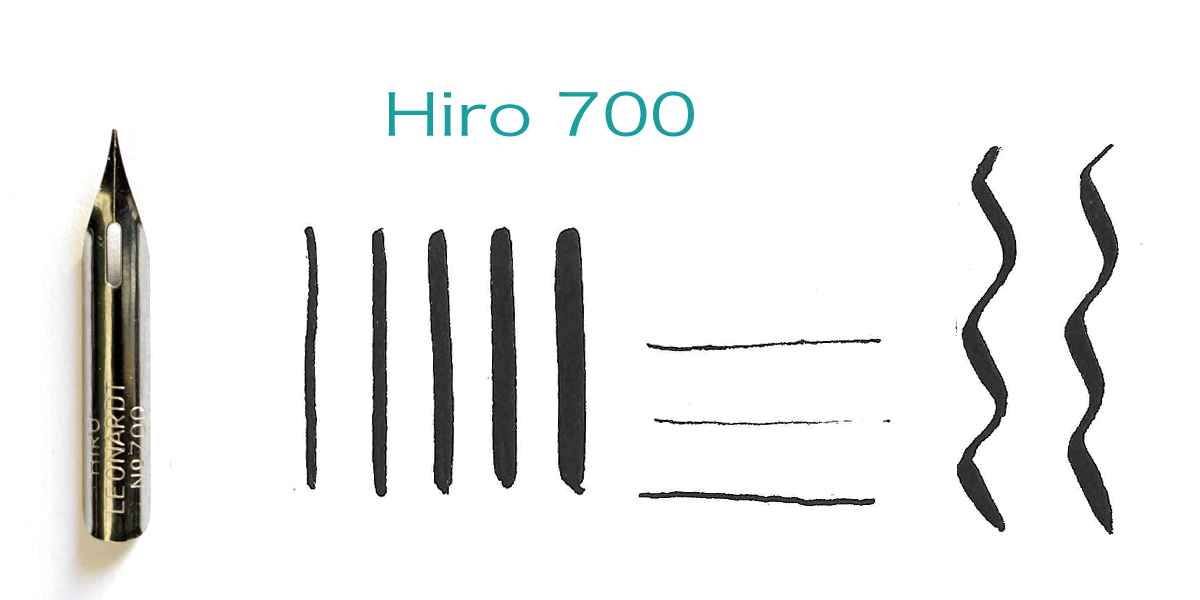

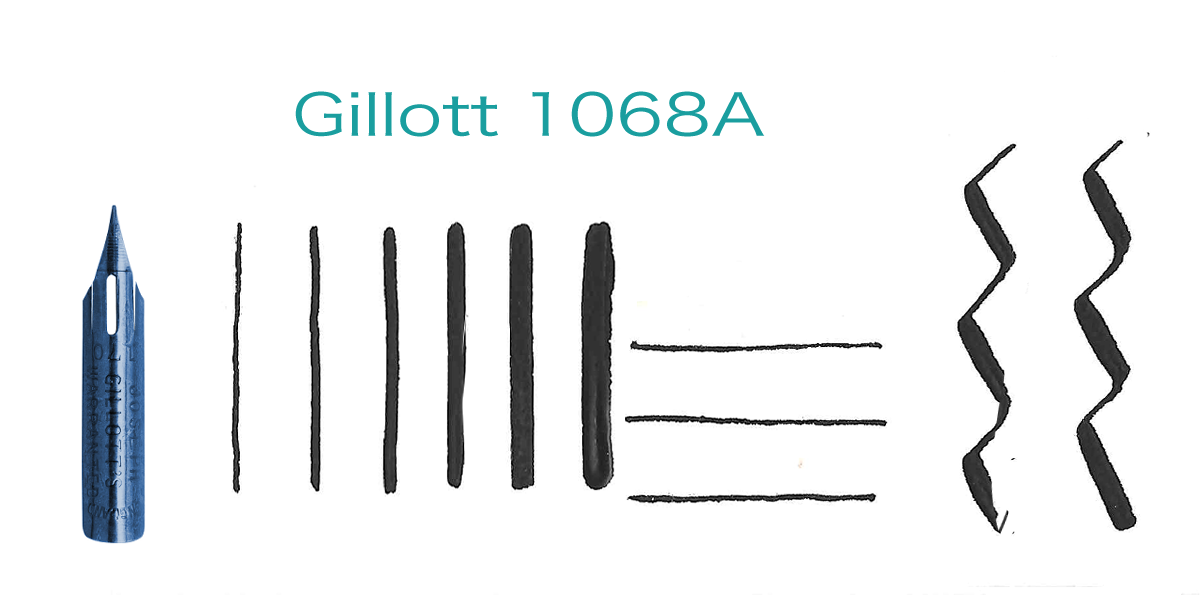
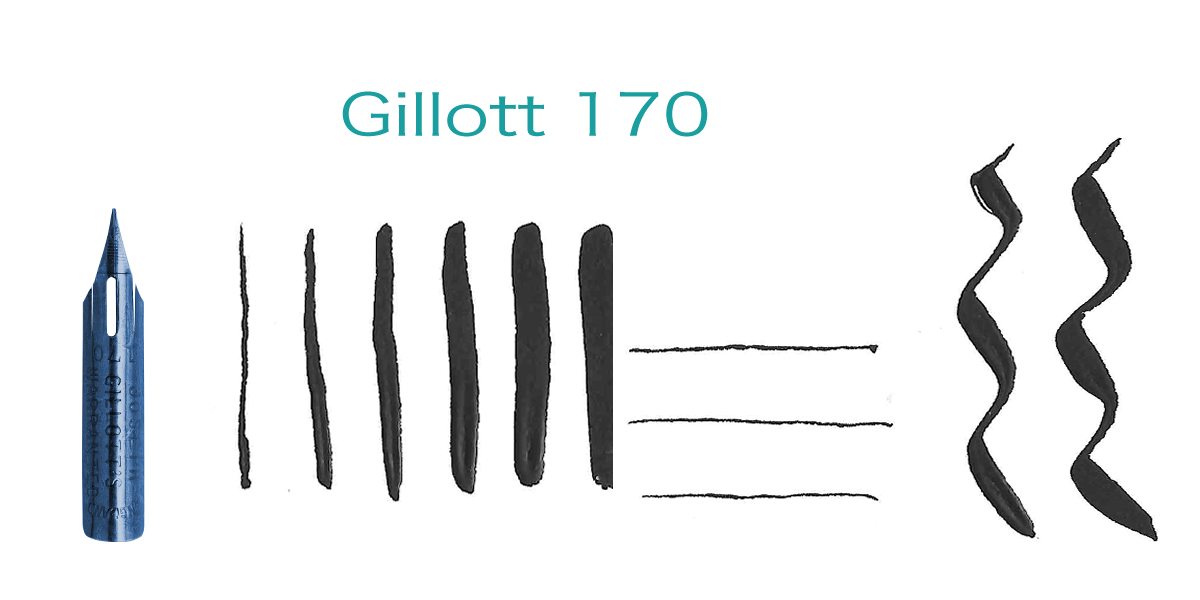
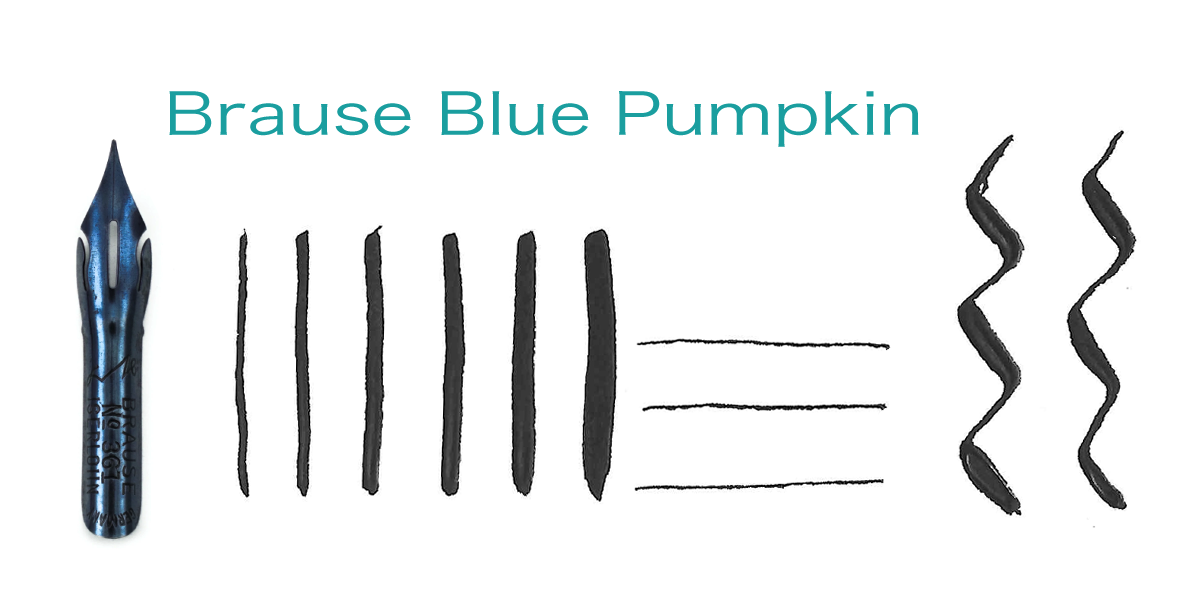
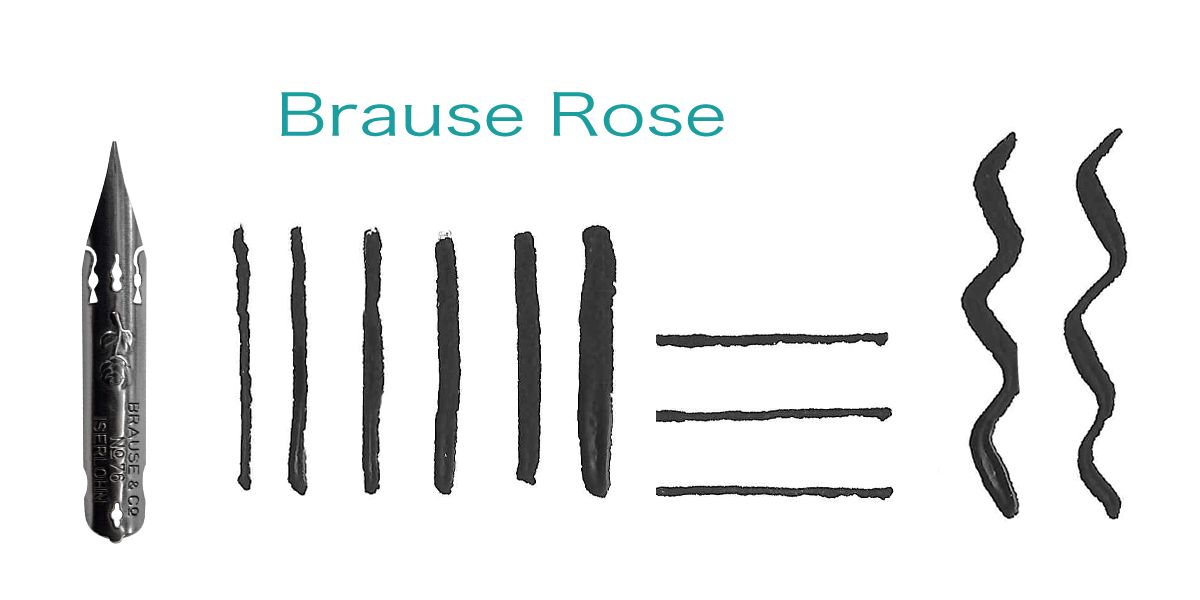
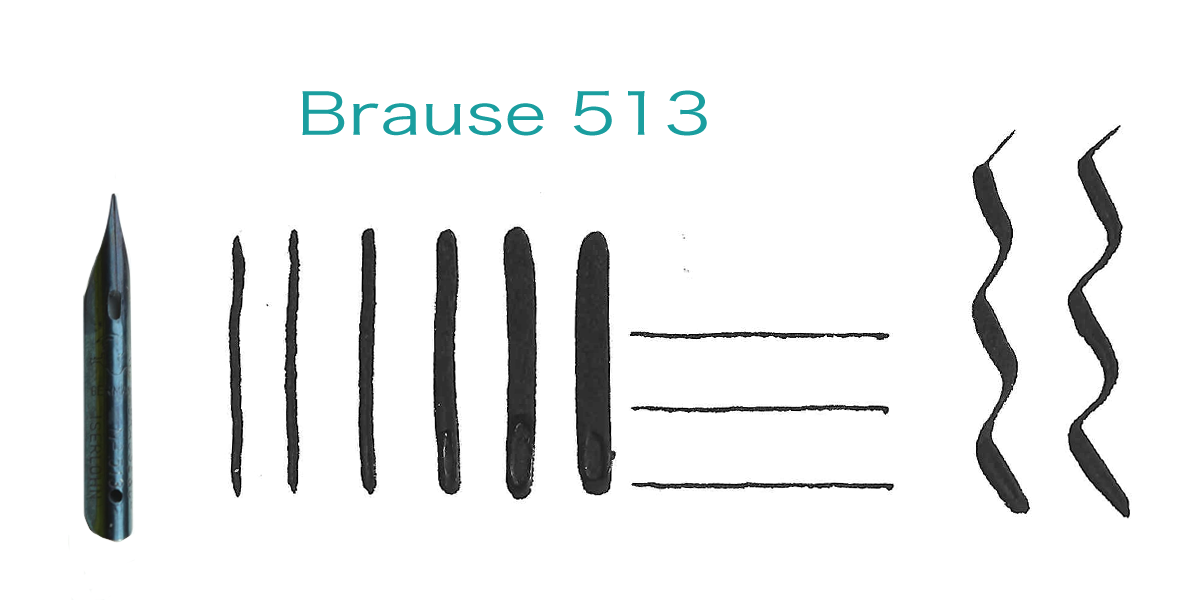

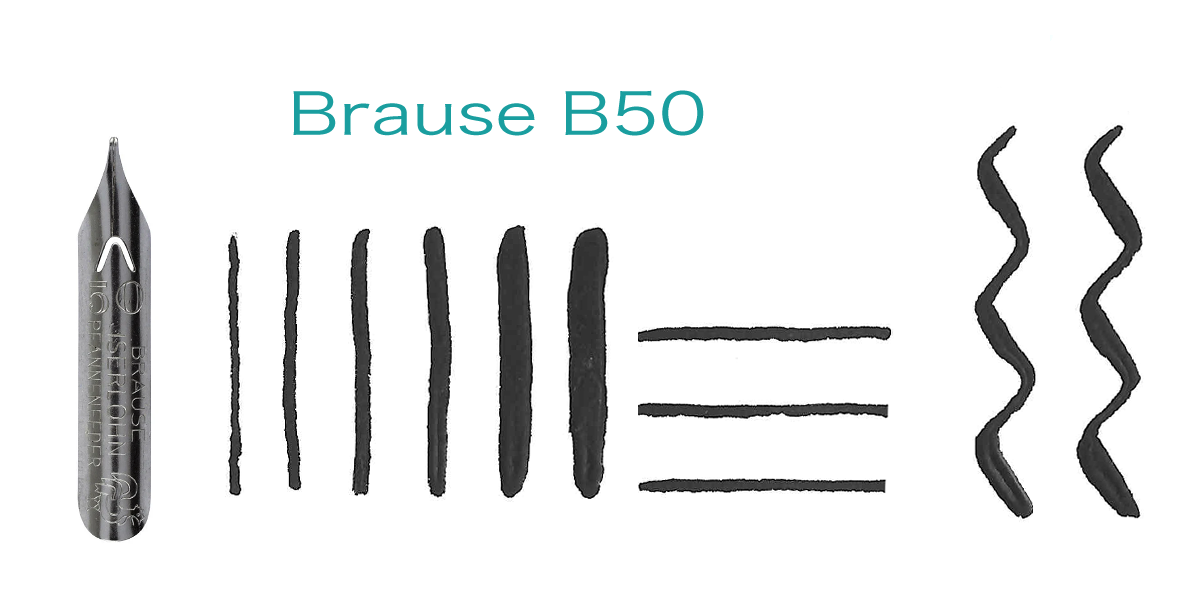
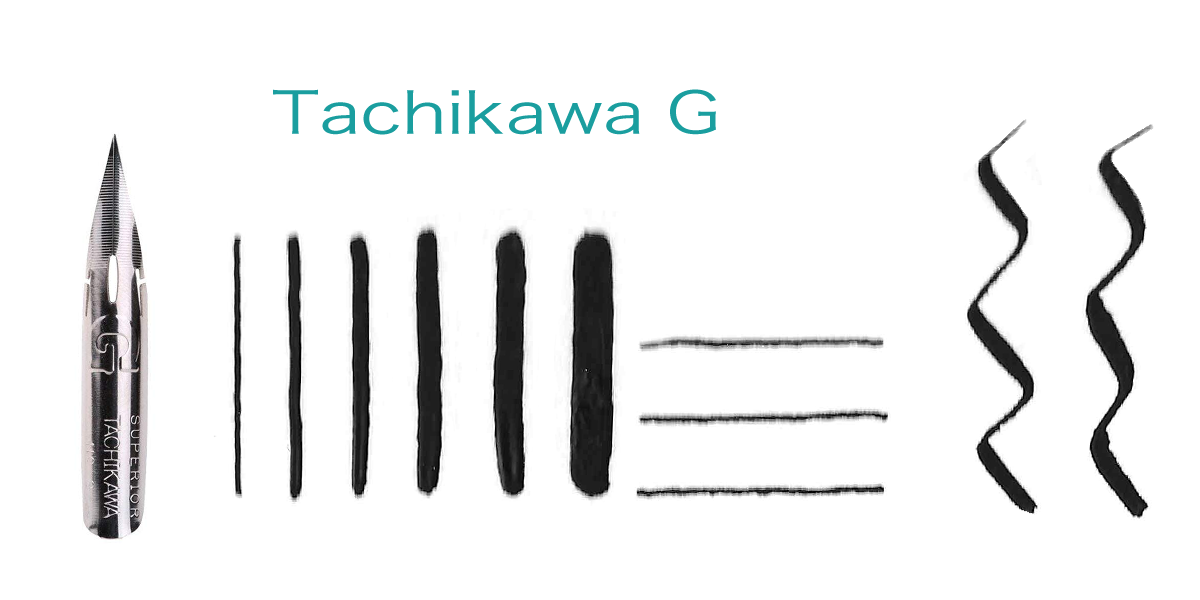
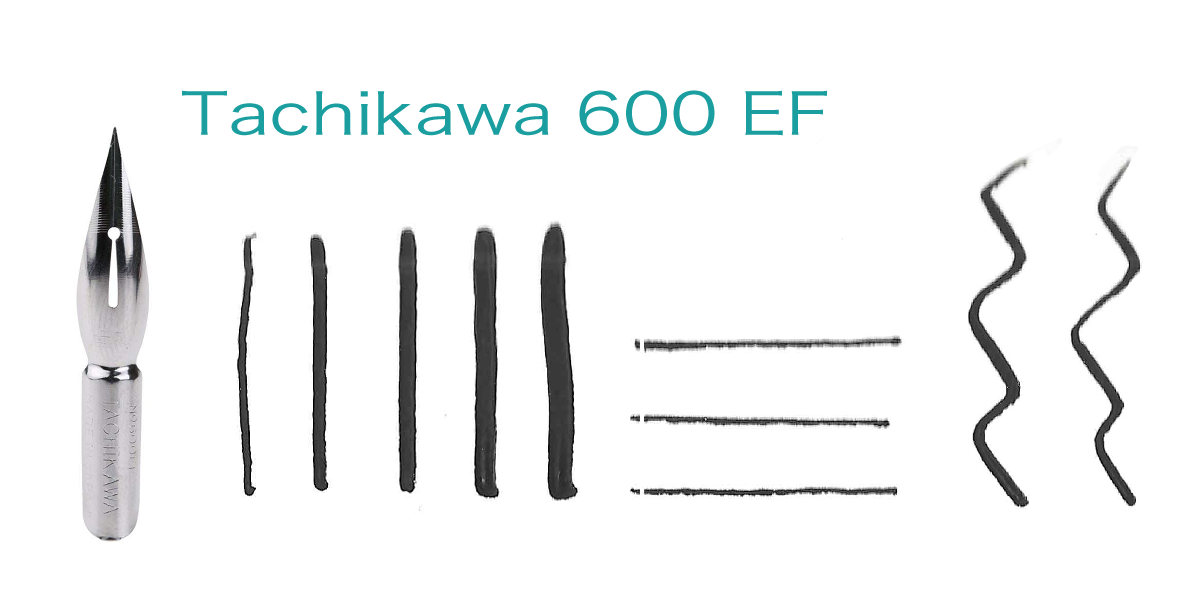
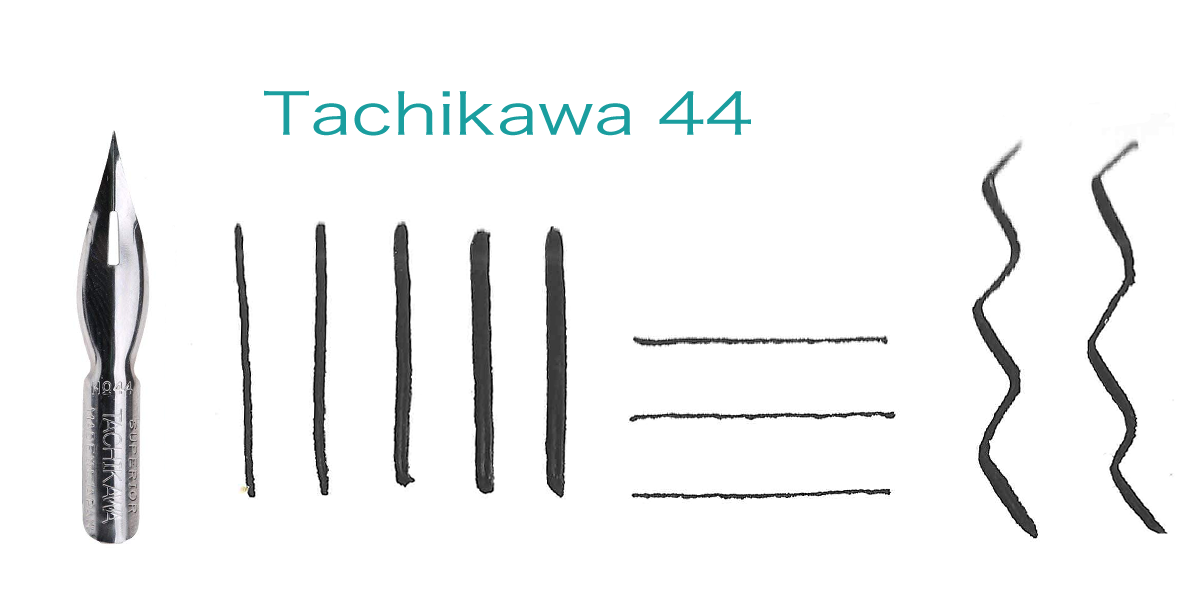
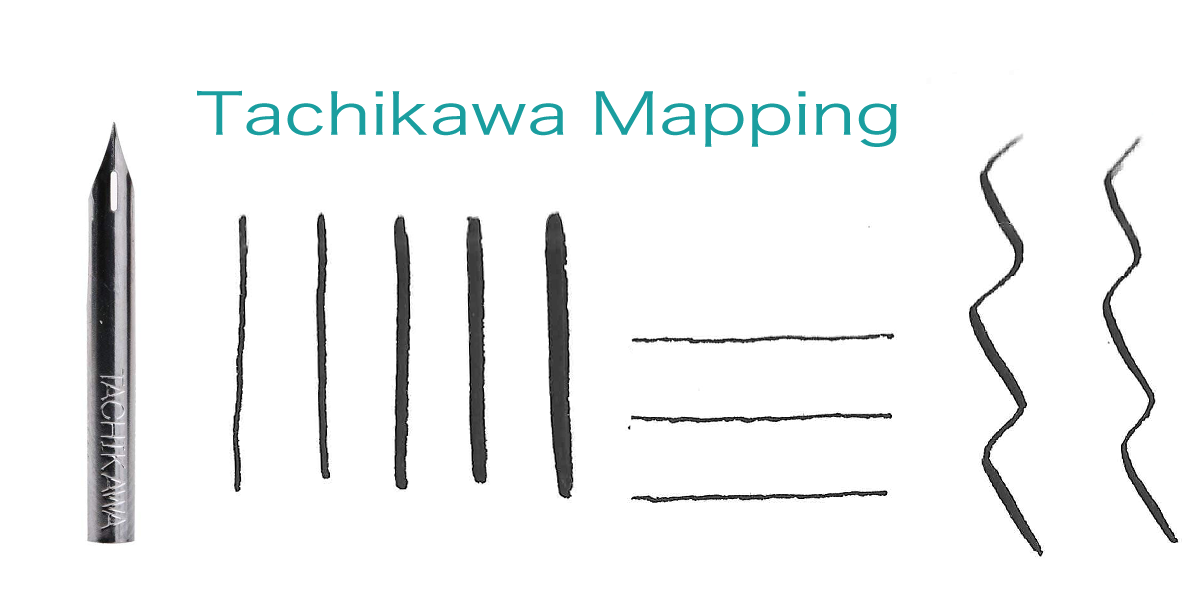
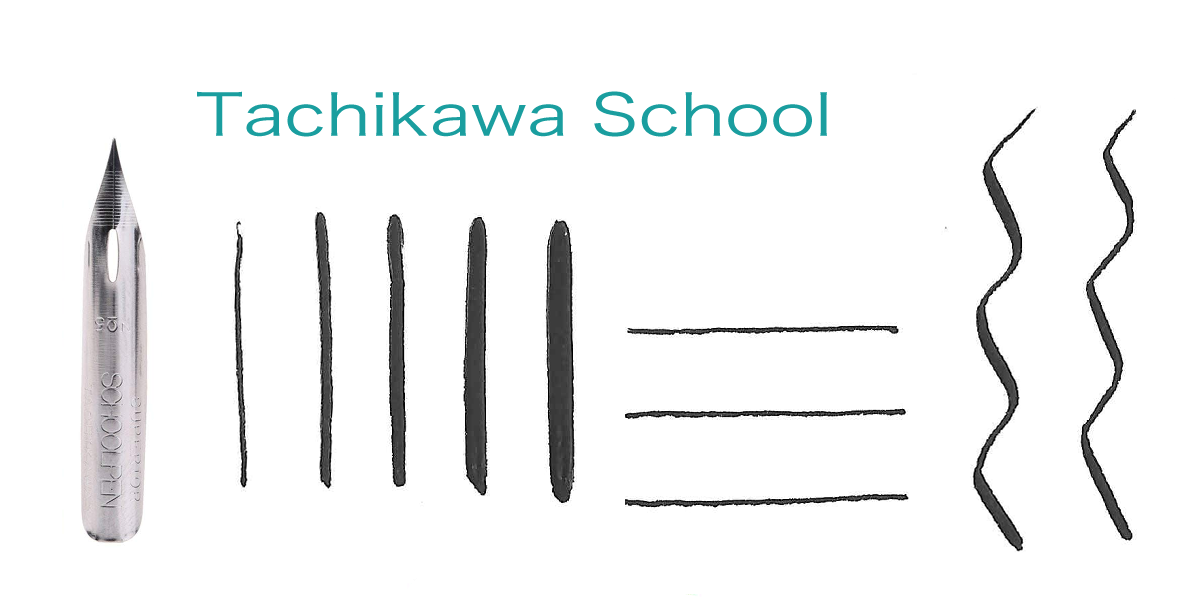
Dip Pen Anatomy | Holders | Nibs | Popular Brands | 10 Tips
